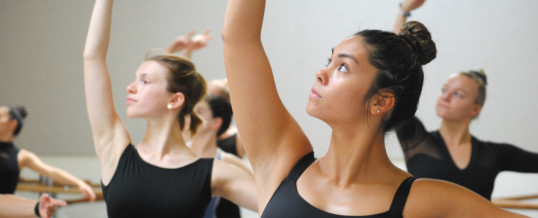Announcing the Release of the 2018 By Artists, For Artists Report on
Massachusetts Artists of all Disciplines, Makers, and Creative Entrepreneurs
The Massachusetts Artists Leaders Coalition (MALC) and Artmorpheus are proud to announce the release of the 2018 By Artists, For Artists report on Massachusetts artists of all disciplines, makers, and creative entrepreneurs. Artists and creatives play a vital role in the cultural life and creative economy of Massachusetts, and this report provides critical insights that will guide advocates and policy makers.
The 2018 By Artists, For Artists report synthesizes and shares the data collected from the survey of the same name conducted in 2017. The project was a collaboration between Artmorpheus and MALC. The 2018 report is dedicated to the late Liora Beer, the founder of Artmorpheus who passed away on March 2, 2018. Liora was one of the key initiators of the By Artists, For Artists project, and Artmorpheus was the nonprofit umbrella for the project.
The report can be accessed at:
www.artistsunderthedome.org/census.html
In the words of Kathleen Bitetti, artist, co-founder of MALC, and Lead Author of the By Artists, For Artists report:
“The By Artists, For Artists project was a grassroots collaborative effort. We are very grateful to all the individuals and organizations who helped with this project. It also is fitting that the By Artists, For Artists 2018 report is dedicated to Liora and that it is being released in July, the same month marking the 10th anniversary of the founding of MALC. Liora was a co-founder of MALC and was also a member of the MALC Steering Committee.”
Both the By Artists, For Artists report and survey were based on the 2009 Stand Up and Be Counted project, the first-ever Massachusetts statewide survey of working artists of all disciplines. The online survey for By Artists, For Artists was developed by the original Stand Up And Be Counted team of artists and policy experts, in collaboration with other artists and creative entrepreneurs, municipal and state arts and economic development
agencies, and creative economy advocates. However, the By Artists, For Artists survey was expanded to include makers and creative entrepreneurs*, in addition to traditionally defined artists of all disciplines.
The significance of the release of this report has already been noted by key state agencies and legislators. “Supporting working artists is at the core of our mission,” said Anita Walker, Massachusetts Cultural Council Executive Director. “Getting a deeper understanding of their work and what they need to thrive in communities is a central goal of our strategic plan. ‘By Artists, For Artists’ will help inform our policies and programs so we can better support the artists whose work is the foundation for our cultural sector.”
“Tourism is often cited as the third largest industry in the Commonwealth,” said State Senator Adam G. Hinds, Senate Chair of the Joint Committee on Tourism, Arts & Cultural Development. “A major driver of tourism is our creative economy, which is supported by thousands of artists living and working everywhere in Massachusetts, from Pittsfield to Provincetown. Policy makers need data to prove the needs and the economic impact of these creative efforts. The By Artists, For Artists 2018 report will provide the information we need to help us make important decisions on how to best
support our artists of all disciplines and this important and vibrant sector of our economy.”
“The By Artists, For Artists 2018 report will serve as a legislative road map for broader policy discussions and development of legislation that best supports the needs of our artist community,” said Cory Atkins, House Chair of the Joint Committee on Tourism, Arts, and Cultural Development. “The report underscores the need to invest in our artists so that they have the means to express their creativity and enrich our lives with the work of their imagination.”
The 2018 report’s findings and recommendations will provide invaluable insight towards a shared understanding of how better to serve Massachusetts’ creatives and artists of all disciplines.
Six important insights that emerge from a comparison between the new By Artists, for Artists report and the earlier the 2009 Stand Up and Be Counted report include:
- The creative sector in Massachusetts is highly educated, something that was consistently reflected in both surveys. Nearly 87%of the By Artists, For Artists respondents and nearly 82% of the 2008 Stand Up and Be Counted respondents had a college degree or higher.
- For both surveys, the majority of the respondents were long-term practitioners of their creative practice, and the majority were long-term residents of the Commonwealth.
- Both surveys revealed that professional artists/creatives, even though they are highly educated, on average earn below 400 percent of the Federal Poverty Level or in most cases below $40,000.
- Close to 50% of respondents in both surveys had a business loss from their creative practice. Only just over 25% in both surveys reported they had a gain.
- In both surveys, 75% or more of those respondents who identify themselves as professional artists/creatives cannot or do not earn their living entirely from their creative practice.
- One quarter in both survey samples have gone without health insurance five or more years.
The By Artists, For Artists project was funded in part by grants from the Blue Cross Blue Shield of Massachusetts Foundation and the Surdna Foundation. The final report, however, due to the loss of Liora, was produced by an all-volunteer team overseen by the Massachusetts Artists Leaders Coalition (MALC). The members of the By Artists, For Artists Report Team were: Elisa Birdseye (MALC Steering Committee Member),
Kathleen Bitetti (MALC Steering Committee Member), Jill Carrier, and David Galiel. The entire design of the report, visual and navigational, was the creation of MALC Steering Committee Member Erin M. Harris.
The report can be accessed at:
www.artistsunderthedome.org/census.html
Download the Press Release
—————————–
*Artists of all disciplines- visual, literary, performing, craft, new media, digital, multi-disciplinary, etc.
Maker – an umbrella term for independent inventors, designers, and tinkerers. The maker movement is a convergence of traditional artisans and computer hackers. Makers tap into admiration for self-reliance and combine that with open-source learning, contemporary design, and personal technology such as 3D printers.
Creative Entrepreneur – set up as a for-profit or nonprofit business to produce a creative/artistic output, with the intent of building a financially profitable enterprise or sustainable organization.
View Permalink
Share



